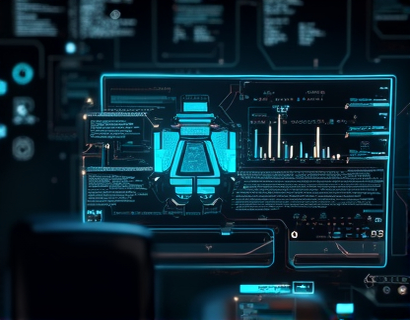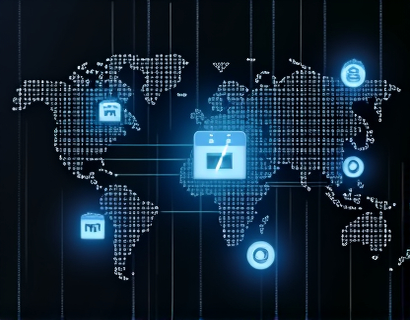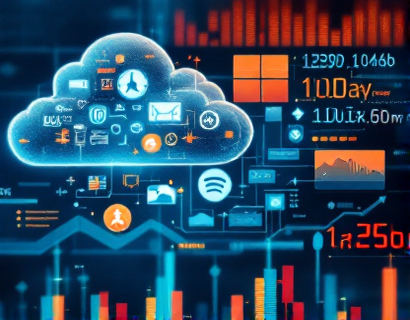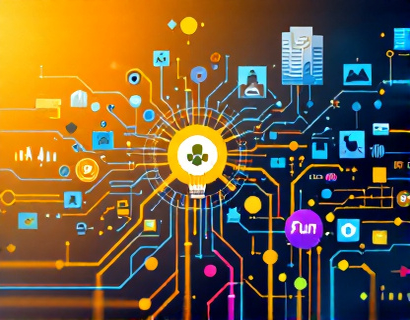AI-Driven Insights in Logistics: A Comprehensive Guide for All Audiences
The integration of Artificial Intelligence (AI) in the logistics sector has revolutionized the way information is disseminated and accessed. This shift towards AI-driven logistics insights not only enhances efficiency and accuracy but also opens up new avenues for education and learning. This article delves into the realm of AI-powered logistics platforms designed to provide expert knowledge and educational resources, ensuring these are verified for accuracy and safety for users of all ages. The focus is on creating a secure and informative experience for logistics professionals, educators, students, parents, and enthusiasts.
Understanding AI in Logistics
AI technologies, including machine learning, natural language processing, and predictive analytics, are transforming logistics operations. These technologies enable real-time data analysis, demand forecasting, route optimization, and supply chain visibility. However, the complexity of these systems can make it challenging for non-experts to grasp the underlying concepts and benefits. To bridge this gap, AI-driven logistics platforms are emerging as valuable resources, offering insights and educational content tailored to various audiences.
Expert Insights for Logistics Professionals
For logistics professionals, staying updated with the latest trends and technologies is crucial. AI-driven platforms provide in-depth articles, case studies, and expert analyses that cover a wide range of topics from automation and robotics to blockchain and IoT applications. These resources are designed to help professionals enhance their skills, make informed decisions, and stay ahead in a rapidly evolving industry. The content is curated by industry experts, ensuring reliability and relevance.
Educational Resources for Educators and Students
Educators and students can greatly benefit from AI-driven logistics platforms that offer educational content. These platforms provide lesson plans, interactive modules, and multimedia resources that cater to different learning styles and levels. For students, the content is structured to be engaging and easy to understand, often including child-friendly versions that adhere to educational standards and safety guidelines. This ensures that young learners can explore complex logistics concepts without encountering inappropriate or confusing material.
Child-Friendly Learning Environments
Recognizing the importance of early education in logistics, AI-driven platforms incorporate child-friendly versions of their content. These versions are carefully crafted to be age-appropriate, using simple language, visual aids, and interactive elements. The goal is to spark interest and curiosity in logistics and related fields from a young age. Parents and educators can rest assured that the content is not only educational but also safe and monitored for appropriateness.
Verified Content for Accuracy and Safety
One of the key features of AI-driven logistics platforms is the commitment to content verification. All information provided is rigorously checked for accuracy and relevance. This is particularly important in a field where misinformation can lead to significant operational errors and costs. The verification process involves cross-referencing data from credible sources, consulting with industry experts, and adhering to industry standards and best practices. This ensures that users, whether professionals or students, receive reliable and trustworthy information.
Interactive and Engaging Learning Experiences
To make logistics education more engaging, AI-driven platforms incorporate interactive elements such as quizzes, simulations, and gamified learning experiences. These tools help users apply theoretical knowledge in practical scenarios, reinforcing learning and improving retention. For example, a simulation might allow students to manage a virtual supply chain, making decisions on inventory management, transportation routes, and resource allocation. The AI can provide real-time feedback and suggestions, enhancing the learning process.
Personalized Learning Paths
AI technologies enable the creation of personalized learning paths tailored to individual needs and preferences. Users can start with basic concepts and gradually progress to more advanced topics based on their performance and interests. The platform tracks progress, identifies knowledge gaps, and recommends relevant resources to fill those gaps. This personalized approach ensures that each user, regardless of their starting point, can effectively learn and grow in their understanding of logistics.
Community and Collaboration Features
AI-driven logistics platforms often include community features that foster collaboration and knowledge sharing. Users can join forums, participate in discussions, and connect with peers and experts from around the world. These interactions provide valuable networking opportunities and access to diverse perspectives. For educators, these features can facilitate collaboration on curriculum development and resource sharing, enhancing the overall educational experience.
Accessibility and Inclusivity
Ensuring that logistics education is accessible to all is a priority for AI-driven platforms. This includes providing content in multiple languages, offering text-to-speech options, and ensuring compatibility with assistive technologies. By removing barriers to access, these platforms make high-quality logistics education available to a global audience, promoting inclusivity and diversity in the field.
Real-World Applications and Case Studies
To illustrate the practical applications of AI in logistics, platforms often feature real-world case studies and success stories. These examples demonstrate how AI technologies have been implemented to solve specific challenges, such as optimizing delivery routes, reducing costs, and improving customer satisfaction. By analyzing these case studies, learners can gain insights into the tangible benefits of AI-driven logistics solutions and understand how to apply similar strategies in their own contexts.
Future Trends and Innovations
AI-driven logistics platforms also keep users informed about emerging trends and future innovations in the industry. This includes advancements in autonomous vehicles, smart warehousing, and predictive maintenance. By staying ahead of these trends, professionals and students can anticipate changes in the market and position themselves for future opportunities. The platforms provide forward-looking analyses and expert opinions, helping users prepare for the evolving landscape of logistics.
Conclusion
AI-driven logistics platforms are transforming the way knowledge is shared and learned in the logistics sector. By providing expert insights, educational resources, and interactive learning experiences, these platforms cater to a diverse audience, including professionals, educators, students, and enthusiasts. The commitment to content verification, child-friendly learning, and accessibility ensures that users receive accurate, safe, and engaging information. As the logistics industry continues to evolve, these platforms will play a crucial role in educating and empowering the next generation of logistics leaders.










































